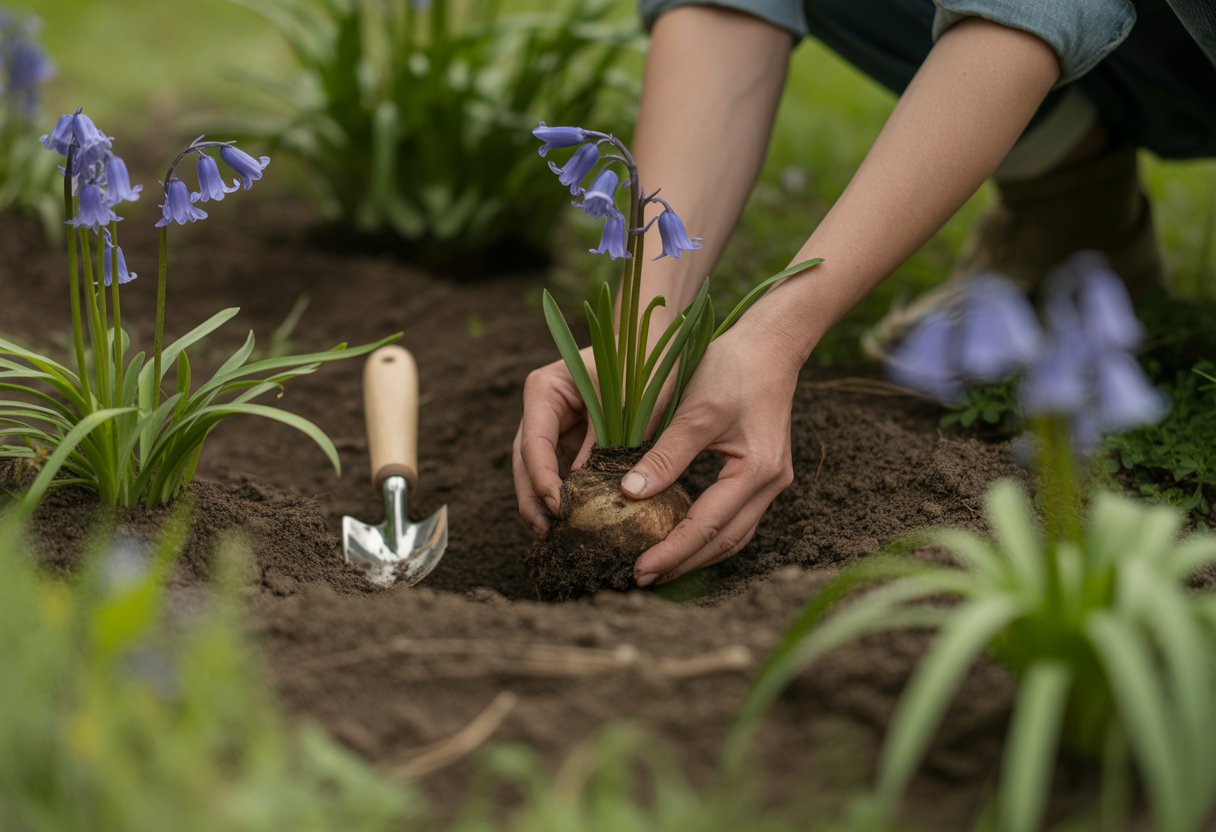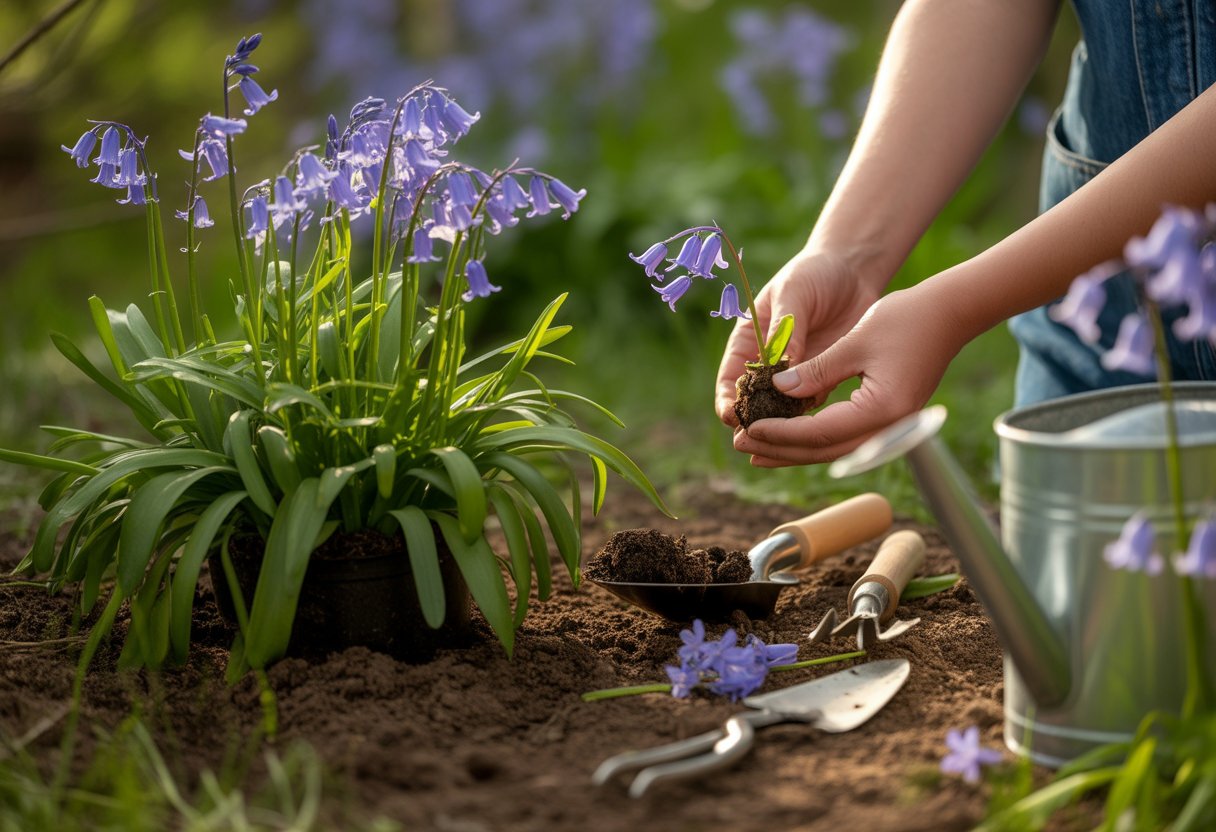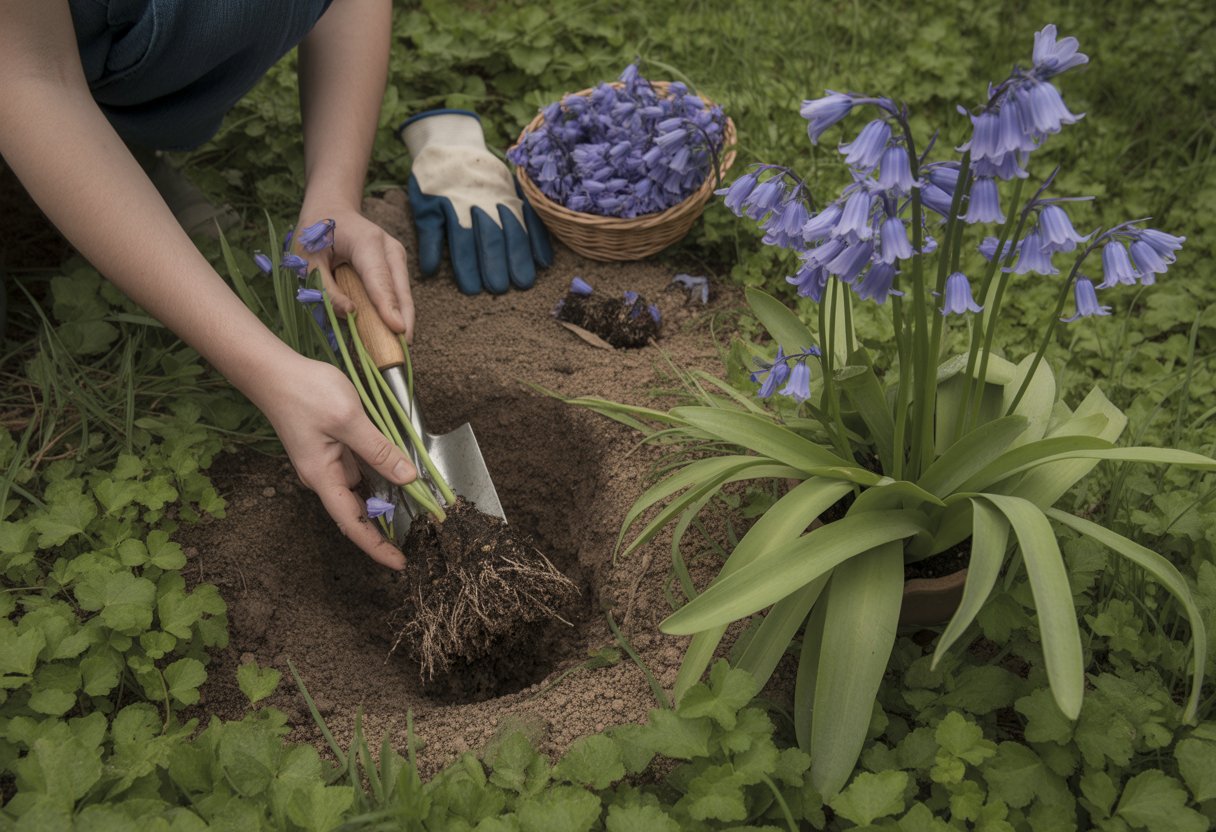How to Propagate Bluebells Effectively for Lush Spring Gardens
Bluebells are popular spring perennials with charming bell-shaped flowers. They’re famous for their ability to spread and naturalize in gardens.

You can propagate bluebells most effectively by dividing their bulbs or sowing seeds in early spring. Dividing bulbs gives you quicker blooms, while starting from seed takes longer but eventually yields more plants.
Knowing the right time and method for propagation helps gardeners get healthy blooms each year. Let’s dig into some practical steps for propagating these reliable spring flowers.
Understanding Bluebells and Their Ideal Growing Conditions
Bluebells come in a few types, and each has its own preferences for light, soil, and moisture. Getting these basics right is half the battle for healthy, happy plants.
Types of Bluebells: English, Spanish, and Virginia Bluebells
English bluebells (Hyacinthoides non-scripta) grow natively in western Europe. Their deep blue, bell-shaped flowers pop up briefly in spring woodlands before leaves overhead block the light.
Spanish bluebells (Hyacinthoides hispanica) stand a bit taller and have paler blue flowers. They’re tougher, handle rougher conditions, and can cross-pollinate with English bluebells, which isn’t ideal if you want to keep things pure.
Virginia bluebells (Mertensia virginica) are native to eastern North America. Their sky-blue blooms show up later in spring, and these plants really like moist, rich soil.
Preferred Location, Light, and Soil Requirements
Bluebells thrive in part shade, just like they would under trees in the wild. Full sun usually stresses them out and fades blooms too fast.
Well-draining, consistently moist soil is best. English and Spanish bluebells manage in various soils but do prefer slightly acidic to neutral pH. Virginia bluebells want more organic matter to stay happy and hydrated.
Plant them near ferns or other spring ephemerals to mimic their natural habitat. Steer clear of soggy ground—waterlogged soil can rot bulbs and stunt growth.
Methods of Propagating Bluebells
You’ve got a few good options for propagating bluebells, depending on what you’ve got and how patient you are. Timing, moisture, and root care really matter here.
You can start from seed, divide mature clumps, or, if you’re feeling adventurous, try cuttings.
Seed Propagation and Using Seed Trays
To grow bluebells from seed, collect seeds in late spring when the pods dry out. Fill a seed tray with well-draining, fertile compost and sow the seeds.
Mist or water gently so the soil stays moist but not soaked. Keep the tray in a cool, shaded spot—bluebell seeds like it that way.
Germination can take weeks, so patience is key. When seedlings have a few leaves and roots, move them to individual pots.
Once the last frost passes, start acclimating them to life outdoors in a sheltered spot before planting in the garden.
Propagation by Division
Dividing mature bluebells works best for quick results. Dig up established clumps in early spring or right after flowering.
Gently break the plant into smaller sections, making sure each piece has roots and shoots. Handle divisions with care to avoid tearing roots.
Plant each section in well-prepped, drained soil. Water right away to help roots settle in.
Taking and Planting Cuttings
Cuttings aren’t the most common way, but it’s possible. Take healthy, non-flowering green shoots about 3-4 inches long in spring.
Snip below a leaf node and dip the cutting in rooting hormone. Stick the cuttings into a moist seed tray or potting mix—keep them damp but not soggy.
Place trays in bright, indirect light with good air flow. Roots should start forming in a few weeks. Once they look solid, transplant to their permanent spots.
Care Tips for Healthy Bluebell Growth

Bluebells need steady care—watering, soil upkeep, and a little pollinator support go a long way. The right techniques help prevent root rot and keep your garden lively.
Watering Techniques to Prevent Overwatering and Root Rot
Bluebells like moist soil, but too much water spells trouble. Root rot can sneak up if the soil stays soggy.
Water deeply but not too often. Let the top inch or two of soil guide you—if it’s dry, it’s time to water.
Try not to water late in the day, since wet leaves overnight aren’t great for bulbs. Use well-draining soil in beds or containers.
If your soil’s heavy or clay-like, mix in sand or organic matter to help water drain faster.
Mulching and Maintaining Soil Conditions
A 2-3 inch layer of organic mulch—shredded bark or leaf mold—keeps soil moisture steady and roots cool. Mulch also cuts down on weeds that steal water and nutrients.
Don’t pile mulch right up to the bulbs; leave a little breathing room to prevent decay. Top up mulch each year to keep things working.
Bluebells do best in slightly acidic to neutral, well-drained soil with plenty of organic matter. Compost each year helps with nutrients and lets roots breathe.
Supporting Pollinators and Companion Planting
Bluebells attract bees, butterflies, and even a few moths—great for pollination and garden diversity. Keeping pollinators around means more seeds and a healthier ecosystem.
Plant ferns nearby to boost shade and moisture. Ferns help create a comfy microclimate for bluebells.
Skip pesticides that harm pollinators. If you can, keep something blooming in the garden all season—pollinators will thank you.
Naturalizing and Transplanting Bluebells

Bluebells really take off when you naturalize them in the right spot. Good soil, dappled shade, and planting at the right time make all the difference for long-lasting, healthy plants.
Establishing Bluebells in Garden Beds and Woodlands
Bluebells love partial to full shade. They thrive in well-drained, moist soil packed with organic matter.
If you want that dreamy dense carpet look, plant bulbs in clusters. This setup echoes how bluebells grow in the wild.
The best time to transplant is early spring, right when new growth peeks out. Gently dig up clumps of bulbs or seedlings, keeping the roots intact.
Set them back in the ground about 4-6 inches deep and space them 4-6 inches apart. It’s a bit of a process, but totally worth it.
Water your newly moved bluebells regularly for the first few weeks. Toss on a light layer of leaf mold or compost—nothing fancy, just enough to lock in moisture and boost the soil.
Try not to mess with established colonies. Bluebells have a delicate growth cycle, and they don’t take kindly to being disturbed.

